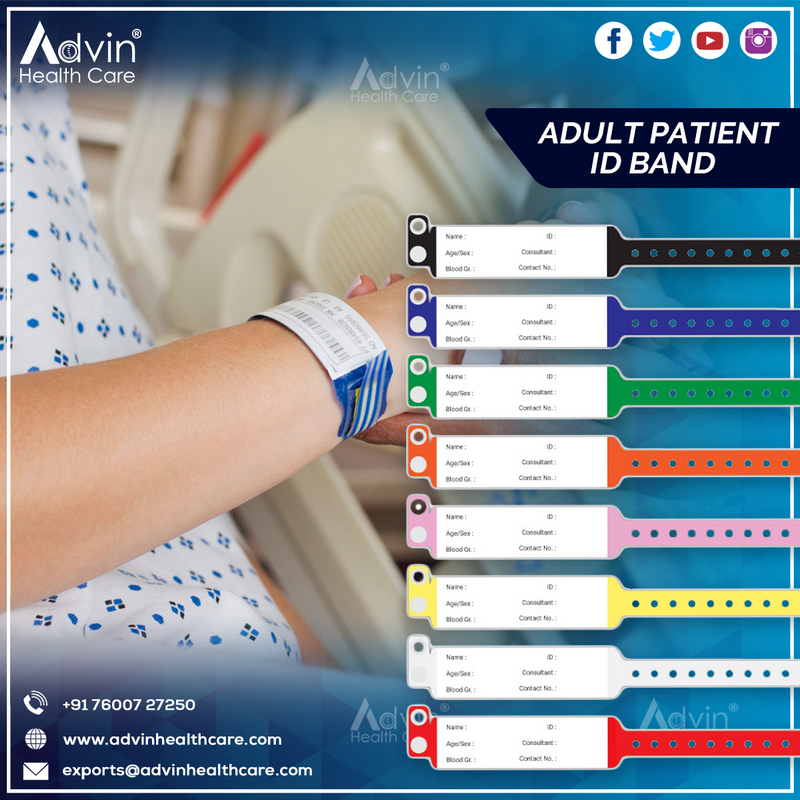Exploring the Advantages of a Patient Identification Band in Preventing Medical Errors
Exploring the Advantages of a Patient Identification Band in Preventing Medical Errors
Blog Article
Exploring the Numerous Sorts Of Patient Identification Band Made Use Of in Clinical Facilities
In the complex globe of health care, the crucial duty of Patient Identification bands commonly goes undetected. These bands, differing from easy paper wristbands to innovative RFID bands, develop the backbone of Patient security procedures, making certain precision in Patient Identification.
Comprehending the Relevance of Patient Identification Bands
While they might appear like simple devices, Patient Identification bands play an essential role in clinical centers. These bands work as a vital device for verifying Patient identity, stopping clinical errors associated with misidentification. The bands normally show important info such as the Patient's name, age, blood kind, and any known allergies. They enable medical care experts to promptly access this important details, thereby promoting precise and timely clinical therapy. Patient Identification bands additionally help in improving management jobs, making sure exact record-keeping and payment. Regardless of their simpleness, these bands personify the concept of Patient safety, a cornerstone of quality healthcare. Without them, the risk of medical errors, and consequently, Patient harm, might considerably enhance.
Conventional Paper Wristbands: Their Use and Limitations
Standard paper wristbands have actually been a staple in Patient Identification throughout various clinical centers. While their use prevails, they harbor certain constraints that might impact their performance in Patient management. This section will concentrate on the range of their application and the fundamental downsides related to their use.
Paper Wristbands: Use Scope
In the realm of Patient Identification, paper wristbands have long held a critical role. These bands are usually utilized in outpatient setups, where the Patient's keep is temporary. Despite improvements in modern technology, the modest paper wristband continues to be a cost-effective and dependable remedy for Patient Identification in various health care situations.
Limitations of Paper Wristbands
Regardless of their extensive usage, paper wristbands are not without their disadvantages. In addition, paper wristbands often do not have the technological capacities of more modern-day options, such as barcoding or RFID chips, limiting their performance to merely showing written info. Paper wristbands can cause pain or skin irritability to some patients, specifically when worn for prolonged periods.
Barcoded Wristbands: Improvements in Patient Identification
While Patient Identification has actually long been a crucial facet of healthcare, the introduction of barcoded wristbands indicates a significant leap onward. These bands leverage the simpleness of barcoding technology, allowing for Patient details to be promptly checked and accessed. They enhance the speed and precision of Patient Identification, decreasing the danger of clinical mistakes associated with misidentification. Barcoded wristbands are economical, very easy to produce, and get rid of handwriting mistakes usual with manual systems. They are not without limitations. While they provide renovations over typical bands, the barcode can become worn or smudged, making it unreadable. In spite of this, barcoded wristbands remain a necessary device in modern-day healthcare settings, symbolizing the intersection of technology and Patient treatment.
Superhigh Frequency Identification (RFID) Bands: a Step In The Direction Of Futuristic Medical Care
The advancement of Patient Identification bands has caused the development of Radio Frequency Identification (RFID) Bands (patient identification band). These cutting-edge tools existing essential advantages for healthcare centers, supplying an extra effective you could try here and technologically progressed methods of Patient Identification. The application of RFID in medical care is a substantial action towards an extra advanced method to Patient administration and safety
Recognizing RFID Bands

RFID Bands: Key Benefits
Primarily, these bands enhance Patient safety and security by providing exact, instant Identification, consequently decreasing medical mistakes. RFID bands can save a huge quantity of Patient information, consisting of medical background and allergic reactions, allowing customized treatment. In general, RFID bands represent a significant advancement in Patient Identification technology, profiting both patients and medical care providers.
Implementing RFID in Healthcare
As we enter a highly sophisticated era, the execution of RFID bands in medical care ends up being significantly crucial. These bands give a smooth method to track and determine patients, ensuring their safety and security and enhancing effectiveness in treatment procedures. RFID bands supply many benefits over traditional Identification techniques. They can save a vast amount of information, including the Patient's case history and therapy strategies, which can be conveniently accessed by doctor. This information aids physicians make educated decisions pertaining to the Patient's therapy strategy. In addition, RFID bands minimize clinical errors by providing precise Patient Identification, which is critical in protecting against misdiagnosis or incorrect medicine management. Thus, the execution of RFID bands is a considerable action in the direction have a peek here of improving Patient safety and medical care distribution.

Color-Coded Wristbands: Helping in Quick and Accurate Diagnosis
In the bustling atmosphere of a medical facility, color-coded wristbands have become crucial tools for swift and precise Identification of a person's clinical problem. These wristbands, put on by people, lug particular colors that correspond to different clinical conditions or statuses. Red might indicate allergic reaction risks, while yellow might represent a loss danger. This system is designed to supply instant aesthetic hints to doctor, boosting Patient safety and security and care high quality. In emergency situation circumstances, using these wristbands enables rapid decision-making. Nonetheless, the effectiveness of color-coded wristbands relies on the uniformity of shade interpretation across medical care organizations, calling for typical criteria for consistent application.
Methods for Reliable Application and Administration of Patient ID Bands
Accomplishing optimal usage of Patient Identification bands necessitates a well-structured approach for their i thought about this application and management. Patient education is additionally important; patients have to recognize the purpose of the bands and the demand for their consistent wear. It's crucial to have a back-up plan in area, such as barcode scanning or biometrics, to guarantee that Patient Identification is never endangered.
Final thought
Patient Identification bands are important in medical centers to ensure security and precision. Conventional paper, barcoded, RFID, and color-coded wristbands each hold one-of-a-kind advantages, ranging from cost-effectiveness to sophisticated information storage space and instant clinical alerts. Efficient implementation and management of these bands can dramatically lower medical mistakes, increase performance, and improve overall Patient treatment. Thus, understanding and utilizing these Identification devices is extremely important for maintaining high requirements in medical care.
These bands, varying from easy paper wristbands to sophisticated RFID bands, create the foundation of Patient security methods, making certain precision in Patient Identification.The advancement of Patient Identification bands has actually brought concerning the emergence of Radio Regularity Identification (RFID) Bands. On the whole, RFID bands stand for a substantial advancement in Patient Identification modern technology, profiting both people and medical care providers.
RFID bands reduce clinical mistakes by supplying exact Patient Identification, which is important in avoiding misdiagnosis or wrong medication management. Patient education and learning is likewise important; patients have to understand the purpose of the bands and the need for their constant wear.
Report this page